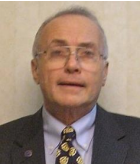Is it “Them” and “Us”, or Is it “Us Together”?

[September 2023] From the fires on Maui to the hurricane flooding in the southeast, the past month has had more than its share of emergencies, highlighting the sometimes-good, sometimes-not-so-good relationship between broadcasters and emergency managers. Despite a few cases where the two cultures have been able to work together, some have called the general relationship “tortured.” Richard Rudman would like to bring broadcast and emergency folks together – but at a minimum, move away from any aspect of “tortured.”
I would not describe the relationship between our industry and the government emergency management community as “them” and “us” – and as “tortured.”
The relationship usually is more like “arm’s length” or “non-existent.” If you do not know “them,” how can they know you?
Here are my thoughts on a few things about this type of relationship that I have learned after almost 40 years of working with emergency managers all over the country, some whom have become close friends.
THE RIGHT REPUTATION
Some stations’ reputation as good news sources relates directly to how easy it is (or is not) to build a working relationship.
Was the fact I was the Director of Engineering for a leading “All News” station in Los Angeles a leg up when I started talking to the Los Angeles County and the City of Los Angeles about emergency public information and EAS?
Darn right, it did!
ROADBLOCKS TO RELATIONSHIPS
Let us acknowledge and discuss some factors in the way of good relationships between the Emergency Management community and “us.”
First of all, there are still a lot of emergency managers who come out of law enforcement – where their day job is controlling information and even keeping information away from nosy news people. Many find it difficult to change their attitude and tone when emergencies require getting life-saving information from them to the public.
When you meet someone in this field for the first time, take their “day job” into account if they appear to be cool to you.
WHY IS THE SIMPLE SOLUTION MISSED?
We have seen emergencies nationwide where EAS was available but not used.
Part of the reason why EAS is not turned to first is the new bright and shiny public warning objects like “X” (aka Twitter), a wide range of other social media, WEA, cell phone alerts, and other such options that have captured the attention of many in the emergency management community who have somehow forgotten that the first things that happen in major emergencies are losses of utility power, cell service, and Internet.
This directly relates the Maui event to some of our vast California wildfires, where wind-driven fires destroy cell towers, and the incredible heat melts fiber links and high-tension utility power interconnect circuits.
In each event, the loss of power and cell service rendered all the Internet and social media options moot.
AVOIDING THE WORST TIME
I say this to groups of broadcasters at EAS meetings: “The day of the emergency is a bad day to go and meet local emergency management for the first time.”
The successful local and state EAS Committees have built relationships over the years. I can pretty much tell you what the EAS success rate in each area is like once I know if there is an active local committee.
The other advice I will offer is to go online to the FEMA site and take the series of online courses on “Incident Management” the FEMA offers so you can speak their language. Emergency management nationwide uses standard terms and procedures outlined in the National Incident Management System or “NIMS” at [ https://training.fema.gov:]
- ICS-100: Introduction to the Incident Command System
- ICS-200: ICS for Single Resources and Initial Action Incidents
- ICS-300: Intermediate ICS for Expanding Incidents
- ICS-400: Advanced ICS for Command and General Staff
- IS-700: National Incident Management System, An Introduction
- IS-703: NIMS Resource Management
- IS-706: NIMS Intrastate Mutual Aid – An Introduction
- IS-800: National Response Framework, An Introduction
- G-191: Incident Command System/ Emergency Operations Center Interface
- G-402 Incident Command System (ICS) Overview for Executives/Senior Officials
- E/L/G-2300 Intermediate Emergency Operations Center Functions
BUILD THE RELATIONSHIP
If you have a visitor touring your station who has a Ham call or knows the difference between Class A, B, and C amplifiers, you are likelier to strike up a relationship.
The same applies if you walk into your local emergency management office and speak their language. It does not have to be the station engineer; GMs, PDs, and News Directors can all play a significant part in building a good working relationship.
Finally, many local emergency management agencies purchased the same EAS boxes in our stations. The difference is that we know how to program and maintain them, and they do not. Offering EAS technical assistance should be on top of your bag of tricks.
So, I do not see the relationship as “them” and “us.” During major declared emergencies, we are all at sea in the same leaky boat, trying to reach a safe harbor.
– – –
Richard Rudman is a regular contributor to The BDR.
He was Director of Engineering for All News KFWB Radio in Los Angeles for 27 years, now operates Remote Possibilities, serves as Chair of the California SECC and consults on EAS issues, and is a CalFire vendor for an 85 kWh emergency generator he owns and maintains.
You can reach Richard at rar01@me.com
– – –
Would you like to know when more articles like this are published? It will take only 30 seconds to
click here and add your name to our secure one-time-a-week Newsletter list.
Your address is never given out to anyone.
– – –
